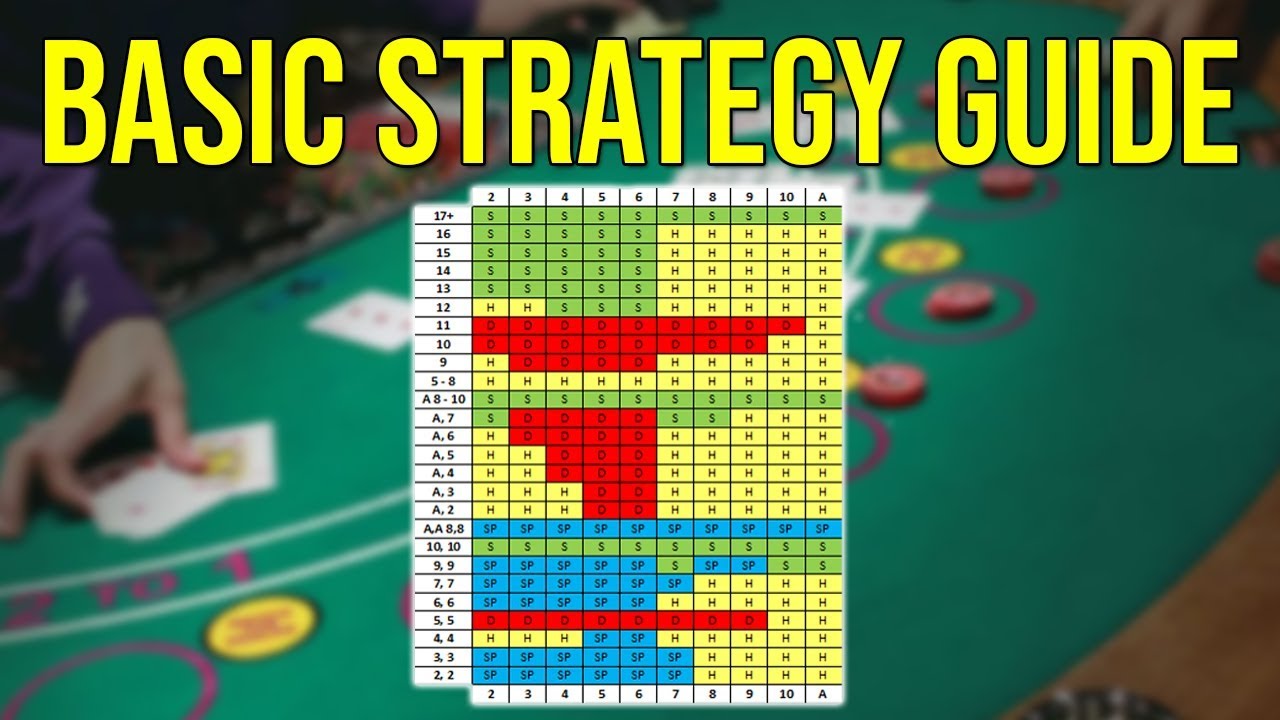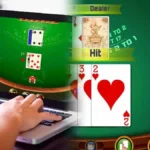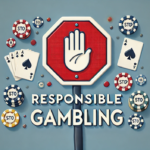Basic Blackjack Strategy Chart

Last Updated on July 2, 2025 by Mary Henderson
If you found this mini-guide, then you know blackjack isn’t just a lucky roll of the cards. So, if you wanna stop guessing and start playing like a pro, a basic blackjack strategy chart is what you need.
But one thing is to have a chart, which you can find basically everywhere online. And another thing is to know how to use it.
Stay tuned for a clear blackjack playbook, a chill breakdown of the must-know moves, how to read that chart like a pro, and extra tips to make the most of it.
Can you break the basic blackjack strategy chart rules (and when)? This and more below.
So, let’s see when you should hit, stand, double down, or split with no sweat.
What Is a Basic Blackjack Strategy Chart Anyway?
Think of it as your blackjack GPS. A game plan that tells you exactly when to hit, stand, double down, or split based on the dealer’s upcard and your hand. So, yes, no more guesswork, but a data-backed playbook that shows you your next move.
What for? To cut the house edge.
Heads-up, though, this doesn’t guarantee your 100% win, but it sure helps keep your blackjack losses in check. And hey, that’s safe gaming done right.
Basic Blackjack Strategy Chart – Take a Peek

Note: This chart is meant to guide, not guarantee your win.
I know, it looks like a mess at first glance. But once you get an understanding of how it works, everything clicks. So, let’s break it down.
Vertical Axis (Your Hand): On the left side, you can notice your hand values. This chart includes soft totals (Ace counted as 11), hard totals (no Ace), and pairs that you can split.
Horizontal Axis (Dealer’s Card): Across the top, you can see the dealer’s visible card. You’ll compare it to your hand and determine what move you should make.
Cells: Where each row (your hand) and column (dealer’s card) intersect, you’ll find the answers labelled with letters.
H for Hit: Take a new card.
S for Stand: Keep your current card (hoping the dealer will bust or end up with a lower hand than yours).
P for Split: If you have a pair, you should split it into two separate hands to increase your chances of winning both bets.
D/H for Double Down if possible, otherwise Hit: It means doubling your bet and taking one more card (if not available, take another card).
D/S for Double Down if possible, otherwise Stand: Try to double down your bet and take exactly one more card, but if your situation doesn’t allow it, you play it safe and stand.
P/H for Split if Double Down after is possible, otherwise Hit: If you have a pair, you should split into two hands, and if doubling down is possible on those new hands, go for it. If not, just hit – take another card.
R/H for Surrender if possible, otherwise Hit: In some games, leaving half of your bet while ending the hand immediately after that might be a better option than going on knowing you’ll most probably lose.
The cool thing is that each box is coloured, so you can easily scan your options, even when you’re playing. Plus, each move is based on statistics, meaning a step closer to improving your odds. And let me tell ya, this basic blackjack strategy chart works like a charm if you know how to use it (speaking from experience, guys).
How to Use the Basic Blackjack Strategy Chart Like a Pro
Trust me, with the right use, beginners can turn this game plan into a very useful tool at the table.
Here’s how you make the most out of this basic blackjack strategy chart.
Start with the Basics
Begin by focusing on the most common scenarios, such as hitting when you have 8 or less in your hand. Rules like this are easy to remember and help you get familiar with the chart.
When to Split Pairs
You shouldn’t treat all pairs equally. Yes, some should never be separated. But always split Aces and 8s (you have two chances of hitting blackjack with an Ace, while splitting 8s can save a losing hand).
When It’s Time to Double Down
This way, you can rake in more chips. If you’re a beginner, you should always double down when you have a total of 11. Why? There’s a good chance your next card will be 10-valued, meaning an unbeatable total of 21.
See? It works.
Hard vs Soft Hands
Hard hands are made up of cards without an Ace or where the Ace has a value of 1. Soft hands have an Ace valued at 11. So, soft hands give you more options.
Don’t Overplay Hands
Seriously, don’t get too aggressive with weak hands. It may seem confident, but statistically speaking, standing on a hard 17 is best. How come? The risk of busting simply outweighs the potential benefit of hitting.
Know When to Stand
Doing it at the right time is a must. Take, for instance, a hard 12 against a dealer’s 4-6. Hard stand.
Find a Way to Remember Suggestions
Literally everything works. You can use repetition or mnemonic systems to learn the suggestions on the basic blackjack strategy chart. But even easier is to break down sections – soft hands, hard hands, and pairs, and take them one by one.
Understand Before Memorizing
Before you even get to memorize anything (we’re not in school, eh?), try to understand why specific moves are suggested. It will help you trust the basic blackjack strategy chart and even remember moves way faster. That’s what I did back in the day, and it worked.
Always Follow the Plan
Even if it sometimes doesn’t feel reasonable, still follow the basic blackjack strategy chart. It’s based on statistics, after all. So, it’s about long-term success.
Chart Variations for Different Blackjack Games
Blackjack ain’t one-size-fits-all. Your best move changes with the number of decks in play, dealer rules, double-down rules, re-splitting, and surrender options.
So, yes, make sure you use the right basic blackjack strategy chart if you play a specific variation of blackjack.
Keep a Chart Handy
As you learn, feel free to keep one of those beside you as you play. After some time, you won’t even need it.
Practice Makes Perfect
The more you play using the basic blackjack strategy chart, the more instinctive those strategies will get. Take it from me and all the blackjack players who comment on Reddit that after enough practice, those moves become automatic. And bt w, you can always test it out on some free blackjack sites – until you master it well at least.
When to Break the Basic Chart Rules?
I’ll be honest with you. Sometimes, breaking the rules on purpose can actually give you a better shot. So, when it makes sense to change your mind?
#1 When You’re Counting Cards
Yes, really.
Alright, this one’s for the pros. If you have a solid counting system, there will be moments telling you the deck is rich in tens and aces. Well, that changes the math.
BUT while counting isn’t officially illegal in Canada, casinos don’t like it. So, if you get caught, you’re on your own.
#2 When You’re Playing a Specific Blackjack Game
If you’re playing free bet blackjack, switch blackjack, or double exposure, those fancy side rules kinda change the strategy.
So, always check the game rules first. I mean, if the dealer hits on soft 17 or the blackjacks pay on 6:5, the usual rules might need a tweak.
#3 When Table Rules Are Wild
Think of no resplits allowed, too few decks or too many decks, or doubling after split not allowed.
#4 When You Use a Bonus
Look, if you claim a bonus, and it (obviously) has wagering requirements, you might want to play it a little safer or, on the opposite, more aggressively, based on how close you are to clearing the rollover.
FYI, some blackjack casinos in Canada don’t allow you to use bonuses on blackjack, or this game may contribute little to nothing, so it doesn’t make sense to claim a bonus at all.
Best Sites to Try The Basic Blackjack Strategy Chart
100%, up to $1,600
- Outstanding four-part welcome offer for new players
- Decent live dealer casino section
- Long-lasting casino, operating since 1998
$1,500 Bonus + 100 Free Spins
- Over 2,500 games from A-list providers
- Wide range of payment options, crypto included
- AGCO registration and iGaming Ontario operating agreement
50 Free Spins No Wagering
- Award-winning gaming platform
- Licensed in Canada
- Over 3,000 games from industry’s premium providers
100% Up to $750 + 200 FS + 1 Bonus Crab
- Wide selection of games from top providers
- Excellent selection of promotions
- Multiple payment methods (crypto included)
100% Bonus Up to $700 + 100 FS on Gates of Olympus
- Generous welcome package and various promos
- Over 9,000 games from big-name brands
- Multi-tier VIP system
Bottom Line: Should You Use a Basic Blackjack Strategy Chart?
As someone who dealt cards in the past and has been to hundreds of casino nights, I can tell you that no matter how lucky they are or how much money they have, casual players keep on losing because they don’t know how to use a strategy chart.
In a few words, the basic blackjack playbook reduces the house edge (as low as 0.5%), offers clear-cut decisions for every situation possible, prevents reckless play that can lead to big losses, and boosts your confidence (makes you feel like you know what you’re doing, which you actually do).
Besides, this basic blackjack strategy chart is easy to understand. Plus, the slight changes to the chart when playing specific blackjack versions take you out of your comfort zone.
So, does it still seem like a piece of paper filled with codes?
Look, blackjack has some of the best odds out there, and if you can use a simple chart that literally tells you how to move in every possible situation, why not? After all, it’s about playing smart and safe.
That’s all, friends. Catch you between the numbers.
- Top 7 Play n Go Slots in Canada - October 1, 2025
- My Favourite Quickspin Slots to Play in 2025 - September 14, 2025
- Old-School Fun with Modern Wins? Try These Best Retro Slots - September 14, 2025















